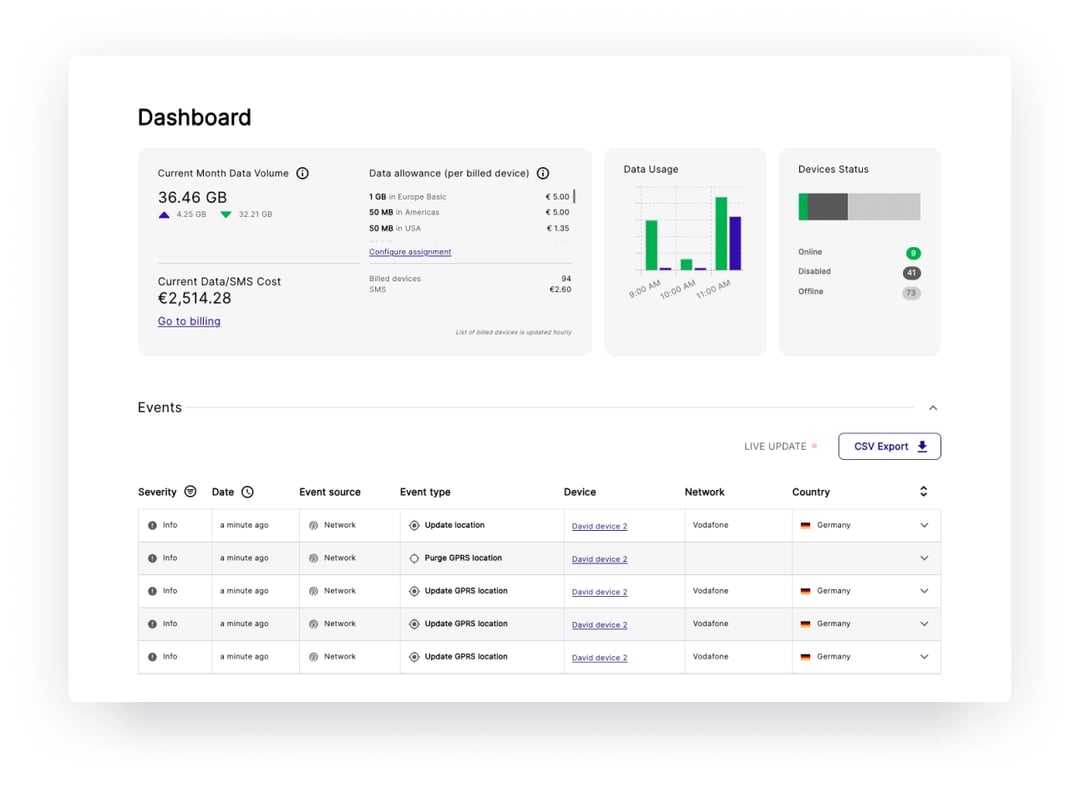Control your devices with emnify's P2P IoT platform
Peer-to-peer IoT platform
emnify's peer-to-peer (P2P) IoT platform enables direct device-to-device control over your products. Our global cellular solution lets your customers control your devices from anywhere—with low latency and better security than P2P typically offers.
Benefit from these key highlight features
Responsive P2P IoT control
P2P IoT works best when your customers need simple control over their devices, and when low latency and data consumption is critical. Using P2P SMS, your customers can use cellular devices to issue commands or retrieve information from your devices.
Secure P2P communication
Lack of security has always been one of the drawbacks of P2P IoT, but emnify gives you tools to protect your P2P communications. Our multi-layered IoT security includes an SMS firewall, which lets you block inbound and/or outbound P2P SMS as needed.
P2P + A2P
emnify's platform combines P2P functionality with application-to-peer capabilities, letting you automate connectivity processes and send more transmissions to and from your devices as needed.
Global IoT SIM cards
P2P IoT depends on cellular connectivity. With emnify's global IoT SIM cards, your devices can connect to more than 540 networks in over 180 countries—so wherever you deploy, you’ll always have the P2P SMS functionality you need.
IoT dashboard
emnify’s P2P IoT platform gives you a convenient IoT monitoring dashboard to monitor and analyze data consumption and costs, connection status, and more. Troubleshoot individual devices, manage entire deployments, or examine every device in the field.
60 days, all features, one platform
Get a free test-kit, including SIM card, pre-paid-plan and a 60-days trial period!

Talk to our experts!
Find out more about our IoT Solution
Global IoT SIM
Best coverage in 180+ countries with a global SIM card
NB-IoT Coverage
Connect large numbers of low-cost IoT devices
LTE-M Coverage
Global LTE-M connectivity with a single IoT SIM
IoT Roaming
Built-in Global Connectivity by emnify